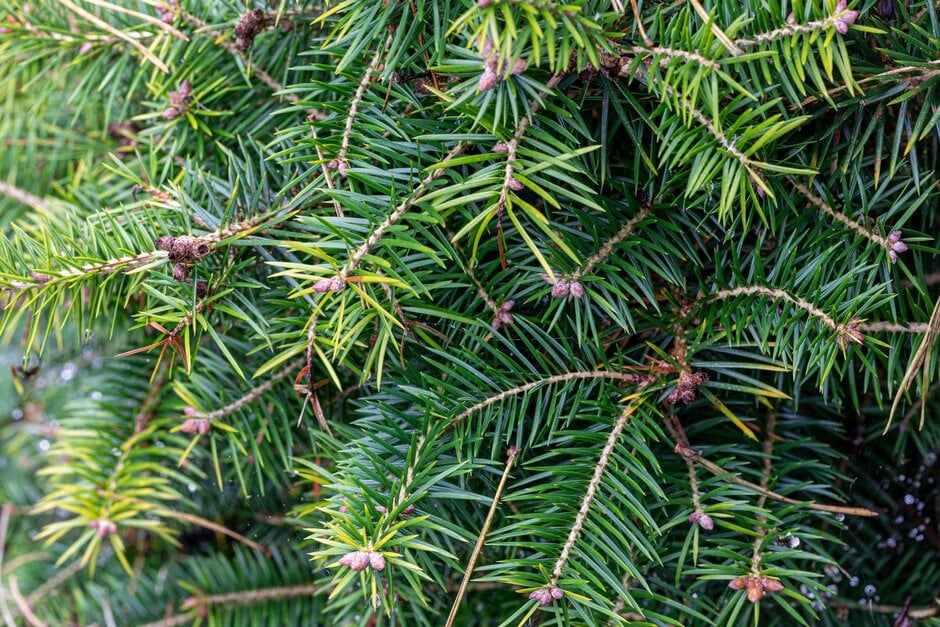Abies chensiensis
Shensi fir
A large conifer reaching up to 40m in the wild with dark grey bark, developing deep grooves with age, and upswept branches creating a conical outline. Fine, pointed, dark green needles are arranged in double rows either side of the branches. Upright, cylindrical cones start green, turning light brown with age

Buy this plant
Size
Ultimate height
Higher than 12 metresTime to ultimate height
more than 50 yearsUltimate spread
4–8 metresGrowing conditions
Moisture
Moist but well–drainedpH
Acid, Alkaline, NeutralColour & scent
| Stem | Flower | Foliage | Fruit | |
| Spring | Grey Silver | Green | ||
|---|---|---|---|---|
| Summer | Grey Silver | Green | Green | |
| Autumn | Grey Silver | Green | Brown | |
| Winter | Grey Silver | Green |
Position
- Full sun
Aspect
South–facing or West–facing
Exposure
Sheltered Hardiness
H7Botanical details
- Family
- Pinaceae
- Native to GB / Ireland
- No
- Foliage
- Evergreen
- Habit
- Columnar upright
- Genus
Abies are evergreen conifers, often very tall, with whorled branches bearing flattened, linear leaves, often whitish beneath, and on the upper branches, large cones which break up whilst attached to the tree
- Name status
Correct
How to grow
Cultivation
Prefers rich, deep,well-drained soil in a relatively sheltered position. See conifer cultivation
Propagation
Propagate by seed
Suggested planting locations and garden types
- Architectural
- Cottage and informal garden
- Low Maintenance
Pruning
No pruning required
Pests
Diseases
Generally disease-free, but may be susceptible to honey fungus
Get involved
The Royal Horticultural Society is the UK’s leading gardening charity. We aim to enrich everyone’s life through plants, and make the UK a greener and more beautiful place.